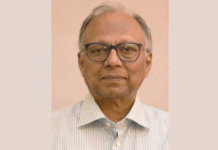
Bangladesh’s back-to-back success in breeding zinc-enriched rice varieties came under the spotlight at a global agricultural conference held in the Rwandan capital last week.
The Bangladeshi rice breeders have developed the world’s first biologically fortified (biofortified) zinc-enriched rice — BRRI dhan62 — in August last year and are currently at the last stage of developing another rice breed with even higher zinc content.
The BRRI dhan62, capable of fighting diarrhoea and pneumonia-induced childhood deaths and stunting, contains 20 parts per million (ppm) zinc content as against an average 14 to 16 ppm available in non-fortified rice varieties. Another biofortified rice variety developed by the Bangladesh Rice Research Institute (BRRI) is in the pipeline for release that would contain 24 ppm zinc.
More than 300 high-level stakeholders from different governments, businesses and civil societies converged on the Rwandan capital of Kigali for the Second Global Conference on Biofortification and took into cognisance the Bangladeshi breeders’ efforts in developing biofortified crops.
The HarvestPlus, a Washington-based global programme to improve nutrition and public health, organised the Kigali conference from March 31 through April 2 with an aim to scale up production of biofortified crops to address the ‘hidden hunger’.

Nearly one in three people globally suffers from a lack of essential vitamins and minerals such as vitamin A, zinc and iron in the diet. This condition, known as hidden hunger, increases the risk of stunting, anaemia, blindness, infectious diseases, and even death. Women and children are especially vulnerable to this situation.
The HarvestPlus has worked with partners to develop new varieties of nutritious food crops that provide more vitamin A, zinc, or iron. These crops, already being grown by around 1.5 million farmers, have been conventionally bred. They include cassava, maize and orange sweet potato for vitamin A; beans and pearl millet for
iron; and rice and wheat for zinc.
The Kigali conference that brought together luminaries like MS Swaminathan, the renowned architect of India’s Green Revolution, Akinwumi Adesina, Nigeria’s minister of agriculture and rural development and Forbes Africa Person of the Year 2013, Dr Mahbub Hossain, Brac adviser and a member of Global Panel on Agriculture and Food Systems for Nutrition, and Chris Elias, the Global Development Program President of the Bill and Melinda Gates Foundation, was particularly encouraged at the rapid and phenomenal successes of biofortified beans in conference’s host nation Rwanda.
Within four years of the first release of iron-enriched bean varieties in Rwanda in 2010, half of the central African country’s 1.2 million farm families have already switched to iron bean farming. Bean is the staple for more than 11 million Rwandese. Iron beans are on track to reach virtually all bean-growing farm households in the country by 2016.
In Rwanda, anaemia, which is used as an indicator of iron deficiency, afflicts almost one in five non-pregnant women and almost one in three children under five. Although iron can be found in several other food items such as red meat, fish, and green leafy vegetables, these are rarely eaten in the quantity needed. The development and dissemination of iron beans complement these efforts and builds on beans as mainstay of the Rwandan diet. On average, Rwandans consume 60kg of beans per capita annually.
Rwanda and Bangladesh apart, biofortified crops have also been released in several other countries under the HarvestPlus initiatives in recent years. These include vitamin A-enriched cassava in Nigeria, vitamin A-enriched maize in Zambia, iron-rich millet and zinc-rich wheat in India and iron-rich beans in Uganda and Congo.
Talking to The Daily Star on the sideline of the conference, HarvestPlus Director Howarth Bouis said, “Pakistan will be joining the bandwagon of biofortified crops by next year. Besides, China and Brazil are also growing biofortified crops.”
“We’re just beginning to scratch the surface… we want to increase access to these nutritious crops as quickly as possible. Now is the time to bring partners together to figure out how we do this together,” said Howarth Bouis.
Though buoyant at renewed fund commitments from Gates Foundation and the UK Department for International Development, Howarth reckons that it would not be possible for HarvestPlus to have its footmarks on all the countries of the world but to scale up the biofortified crop production “we’re partnering with other stakeholders, who can help develop and grow nutrient-rich crops in as many countries as possible.”
Nigerian Agriculture Minister Dr Akinwumi Adesina, who is globally recognised for his efforts in improving African agriculture through innovative technologies, was one of the keynote speakers at the conference. Forbes Africa Person of the Year 2013, Dr Adesina pledged his determination to “make Nigeria the largest grower of biofortified crops”.
Dr Md Alamgir Hossain, a chief scientific officer at the plant breeding division of BRRI, who led the long and arduous process of zinc biofortification in rice since 2003, was also among the participants of Kigali conference.
“In coming Aman season, we’ll be distributing BRRI dhan62 [the zinc-rich rice] seeds among 10,000 selected rice growers in the country. Besides, we’re also expecting that another rice variety, which is bred to give more zinc content and meant for Boro season, would get regulators’ nod soon,” Alamgir, also a post-doctoral fellow of the Manila-based International Rice Research Institute (IRRI), told The Daily Star.
Source: The Daily Star









